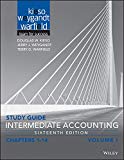
Lease: A contractual arrangement between the owner of the asset and the user of the asset for a fixed amount of money is termed lease. In this contract the owner of the asset permits the user to use the property for a fixed sum of money received at the time of handing over the asset. At the end of the contract tenure the user of the asset need to return the asset to the owner. The parties involved in the contract are termed the lessor the owner of the asset and the lessee the user of the asset.
Sale and leaseback lease:
- (a) The owner of the asset sells the property or asset in the market with an agreement to lease back the same for a specific amount.
- (b) The sale of the asset or property may be less or more than the market or fair value of the asset.
- (c) The ownership of the asset gets transferred and the current owner of the asset becomes the lessor.
- (d) The income of the lessee should get amortized within the tenure of the lease.
- (e) The losses incurred due to the leased asset should be adjusted in the current year.
- (f) The
depreciation -related expenses are treated based on the nature of the asset and generally over the economic life of the asset.
Case summary: P Corporation sold an asset and leased back the same for 8 years. The property title alone is transferred; the usage right was with P Corporation. It also gained some amount out of the sale of equipment.
(a)
To determine the reason for capitalizing the long-term lease.
(b) (1)
To determine the procedure of accounting the sale and leaseback transactions.
(b)(2)
To determine the way to record the lease of the equipment.
(c)
To determine the process of amortizing the gain from the sale and leaseback transaction.
Want to see the full answer?
Check out a sample textbook solution
Chapter 21 Solutions
Study Guide Intermediate Accounting, Volume 1: Chapters 1 - 14
- I want the correct answer with accounting questionarrow_forwardDo fast answer of this accounting questionsarrow_forwardWhich of the following is the most appropriate way to display liabilities on the balance sheet? a. alphabetically by payee b. relative likelihood of payment c. nearness to maturity d. All of these answer choices are correct.arrow_forward
- Can you help me with accounting questionsarrow_forwardFor which of the following would year-end accrual of a current liability be optional? a. Current portion of a long-term lease obligation that comes due next year b. A declared property dividend c. Sick pay benefits that accumulate but do not vest d. Short-term debt that is being refinanced on a long-term basisarrow_forwardQuick answer of this accounting questionsarrow_forward
- Swifty Supply Co. has the following transactions related to notes receivable during the last 2 months of 2027. The company does not make entries to accrue interest except at December 31. Nov. 1 Loaned $30,000 cash to Manny Lopez on a 12 month, 10% note. Dec. 11 Sold goods to Ralph Kremer, Inc., receiving a $85,500, 90-day, 8% note. 16 Received a $87,840, 180 day. 10% note to settle an open account from Joe Fernetti. 31 Accrued interest revenue on all notes receivable. (a) Journalize the transactions for Swifty Supply Co. (Ignore entries for cost of goods sold.) (Credit account titles are automatically indented when amount is entered. Do not indent manually. Use 360 days for cal in the order presented in the problem. List all debit entries before credit entries.) Date Account Titles and Explanation Debit Creditarrow_forwardHi expert please give me answer general accounting questionarrow_forwardHoward James started a business in 2011 in Jamaica and has been operating in the wholesale/retail industries, where he buys and sells household items to the local market. In 2012, he expanded his business operations and opened two other businesses in Trinidad and Tobago and Antigua and Barbuda, respectively. The annual sales of the respective businesses in 2015 are: Jamaica: J$3,000.00 Trinidad and Tobago: TT$251,000.00 Antigua and Barbuda: $299.00 Mr. James failed to register his business for VAT/GCT as specified by the respective Sales Tax Acts and Regulations. He stated that there is no need for his businesses to be registered because their sales are under the VAT thresholds and thus not required to be registered. a) You are to advise Mr. James if his decision not to register his businesses is justifiable. b) Search the respective VAT Acts for the 3 countries and advise Mr. James of the benefits of being a registered taxpayer; also the penalties for not registering for VAT/GCT.arrow_forward

 AccountingAccountingISBN:9781337272094Author:WARREN, Carl S., Reeve, James M., Duchac, Jonathan E.Publisher:Cengage Learning,
AccountingAccountingISBN:9781337272094Author:WARREN, Carl S., Reeve, James M., Duchac, Jonathan E.Publisher:Cengage Learning, Accounting Information SystemsAccountingISBN:9781337619202Author:Hall, James A.Publisher:Cengage Learning,
Accounting Information SystemsAccountingISBN:9781337619202Author:Hall, James A.Publisher:Cengage Learning, Horngren's Cost Accounting: A Managerial Emphasis...AccountingISBN:9780134475585Author:Srikant M. Datar, Madhav V. RajanPublisher:PEARSON
Horngren's Cost Accounting: A Managerial Emphasis...AccountingISBN:9780134475585Author:Srikant M. Datar, Madhav V. RajanPublisher:PEARSON Intermediate AccountingAccountingISBN:9781259722660Author:J. David Spiceland, Mark W. Nelson, Wayne M ThomasPublisher:McGraw-Hill Education
Intermediate AccountingAccountingISBN:9781259722660Author:J. David Spiceland, Mark W. Nelson, Wayne M ThomasPublisher:McGraw-Hill Education Financial and Managerial AccountingAccountingISBN:9781259726705Author:John J Wild, Ken W. Shaw, Barbara Chiappetta Fundamental Accounting PrinciplesPublisher:McGraw-Hill Education
Financial and Managerial AccountingAccountingISBN:9781259726705Author:John J Wild, Ken W. Shaw, Barbara Chiappetta Fundamental Accounting PrinciplesPublisher:McGraw-Hill Education





